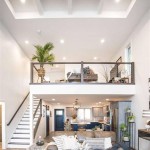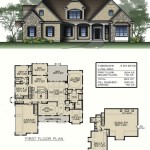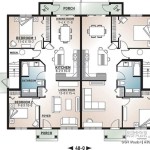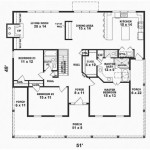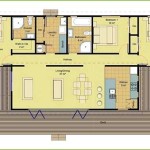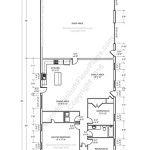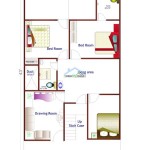Two-Story House Plans With Swimming Pool: Integrating Luxury and Functionality
The confluence of architectural design and lifestyle desires has given rise to an increased demand for two-story house plans incorporating swimming pools. These designs represent more than just residences; they embody a commitment to leisure, aesthetics, and efficient space utilization. This article explores the key considerations, benefits, and design principles involved in crafting two-story house plans with swimming pools, offering insights into creating a harmonious and functional living environment.
A two-story house plan provides ample living space, often accommodating larger families or those who desire dedicated areas for various activities, such as home offices, entertainment rooms, or guest suites. Integrating a swimming pool into such a design elevates the living experience, offering a private oasis for relaxation, exercise, and social gatherings. The synergy between the architectural structure and the pool environment requires careful planning and execution to ensure both aesthetic appeal and practical functionality.
Optimizing Space and Layout
One of the primary challenges in designing a two-story house plan with a swimming pool is optimizing the available space. The placement of the pool significantly impacts the overall layout of the house and surrounding landscape. Consider the orientation of the house in relation to the sun, prevailing winds, and privacy concerns. A south-facing pool will typically receive the most sunlight, while strategic landscaping can provide privacy from neighboring properties. The layout should allow for seamless transition between indoor and outdoor living spaces, often achieved through large sliding doors or expansive patios adjacent to the pool area.
When planning the layout, consider the functionality of the pool area. Adequate space should be allocated for sun loungers, outdoor dining furniture, and potentially an outdoor kitchen or bar area. The pool itself should be sized appropriately for the intended use, whether it's primarily for swimming laps, recreational play, or simply aesthetic appeal. The shape and depth of the pool will also influence the surrounding landscaping and patio design. A rectangular pool, for instance, might lend itself to a more formal, structured landscape design, while a freeform pool could be complemented by a more natural, organic landscape. The placement of the pool equipment, such as pumps and filters, should also be considered, ideally situated in a discreet location that minimizes noise and visual impact.
Furthermore, the two-story structure presents the opportunity for elevated views of the pool area. Balconies or terraces on the second floor can provide panoramic views, enhancing the overall aesthetic of the property. These elevated spaces can also serve as private retreats, offering a quiet space to relax and enjoy the surrounding environment. Strategically placed windows on the second floor can also provide natural light and ventilation to the interior spaces while offering visual access to the pool area. The relationship between the upper and lower levels should be carefully considered to create a cohesive and balanced design.
Structural Considerations and Safety
Integrating a swimming pool into a two-story house plan requires careful attention to structural integrity and safety. The pool itself adds significant weight to the property, and the surrounding soil conditions must be assessed to ensure adequate support. Soil testing and engineering analysis are crucial steps in determining the appropriate foundation design for both the house and the pool. The structural design must account for the weight of the water, the surrounding patio, and any additional landscaping features.
Waterproofing is another critical consideration. Proper waterproofing measures must be implemented to prevent leaks and water damage to the house structure. This includes using high-quality waterproofing membranes and sealants in the construction of the pool and surrounding areas. Drainage systems should also be designed to effectively manage rainwater and prevent water from pooling around the house foundation. Regular inspections and maintenance are essential to ensure the long-term integrity of the waterproofing system.
Safety is paramount when designing a swimming pool area. Building codes typically require fencing or other barriers to prevent unauthorized access to the pool, particularly by young children. Self-closing and self-latching gates are essential features to ensure that the pool area remains secure. Pool covers can also provide an additional layer of safety, especially during periods when the pool is not in use. Furthermore, non-slip surfaces should be used around the pool deck to minimize the risk of slips and falls. Adequate lighting is also crucial for safety, particularly during nighttime use. Underwater lighting can enhance the aesthetics of the pool while also improving visibility.
The placement of electrical components around the pool area requires careful planning to prevent electrical hazards. All electrical outlets and wiring should be installed by a qualified electrician and comply with local building codes. Ground fault circuit interrupters (GFCIs) should be used to protect against electrical shock. Regular maintenance and inspections of the electrical system are essential to ensure safety.
Aesthetic Design and Landscaping
The aesthetic design of a two-story house plan with a swimming pool should reflect the homeowner's personal style and preferences. The architectural style of the house should complement the design of the pool and surrounding landscape. For example, a modern house with clean lines might be paired with a minimalist pool design, while a more traditional house could be complemented by a more ornate pool and landscape. The choice of materials, colors, and textures should be carefully considered to create a cohesive and harmonious design.
Landscaping plays a crucial role in enhancing the aesthetic appeal of the pool area. The choice of plants and trees should be carefully considered to provide shade, privacy, and visual interest. Drought-tolerant plants are a practical choice, particularly in areas with limited water resources. The landscaping should also be designed to complement the architectural style of the house and the design of the pool. For example, tropical plants might be used to create a lush, exotic pool area, while native plants could be used to create a more natural, eco-friendly landscape.
The lighting design is another important aspect of the aesthetic design. Strategically placed lighting can enhance the beauty of the pool area at night, creating a relaxing and inviting atmosphere. Underwater lighting can highlight the contours of the pool, while landscape lighting can accentuate the surrounding plants and trees. The choice of lighting fixtures should be carefully considered to complement the overall design of the pool area. Energy-efficient LED lighting is a practical choice, as it provides bright illumination while consuming minimal energy.
The surrounding patio or deck area should be designed to provide comfortable and functional outdoor living space. The choice of materials for the patio or deck should be carefully considered, taking into account factors such as durability, slip resistance, and aesthetic appeal. Natural stone, concrete pavers, and wood decking are popular choices. The patio or deck should be large enough to accommodate outdoor furniture, such as sun loungers, dining tables, and chairs. Shade structures, such as pergolas or umbrellas, can provide protection from the sun and create a more comfortable outdoor living space. The overall design should aim to create a seamless transition between the indoor and outdoor living spaces, blurring the boundaries between the house and the surrounding landscape.
Furthermore, consider incorporating water features beyond the main swimming pool. A spa or hot tub can provide a relaxing and therapeutic experience, while a waterfall or fountain can add visual interest and a soothing sound element. These additional water features can be seamlessly integrated into the overall design of the pool area to create a more luxurious and inviting outdoor living space.
In conclusion, designing a two-story house plan with a swimming pool requires careful consideration of space optimization, structural integrity, safety, and aesthetic design. By addressing these key considerations, homeowners can create a harmonious and functional living environment that seamlessly integrates the house and the pool area. The result is a private oasis that enhances the quality of life and provides a space for relaxation, exercise, and social gatherings.

Mediterranean House Plan 2 Story Waterfront Mansion Floor W Pool

Luxury Home Photos New Custom Homes With Swimming Pool 2 Story Floor

Two Y Floor Plans With Separate Lounge Boyd Design Perth

Modern 2 Y House With Roofdeck Swimming Pool

Two Y Floor Plans With Real Cinema Boyd Design Perth

Plan 85270ms 2 Story Modern Home With Indoor Pool

Two Y Floor Plans In Hampton S Style Boyd Design Perth

Luxurious 6 Bedroom Home With Five Bathrooms And Swimming Pool Provision Cool House Concepts

Simple House Design With Swimming Pool 2 Y 10 50m X 6 00m 126 Sqm Tfa 3 Bedroom

Beach House Plan Luxury Mediterranean Tuscan Home

